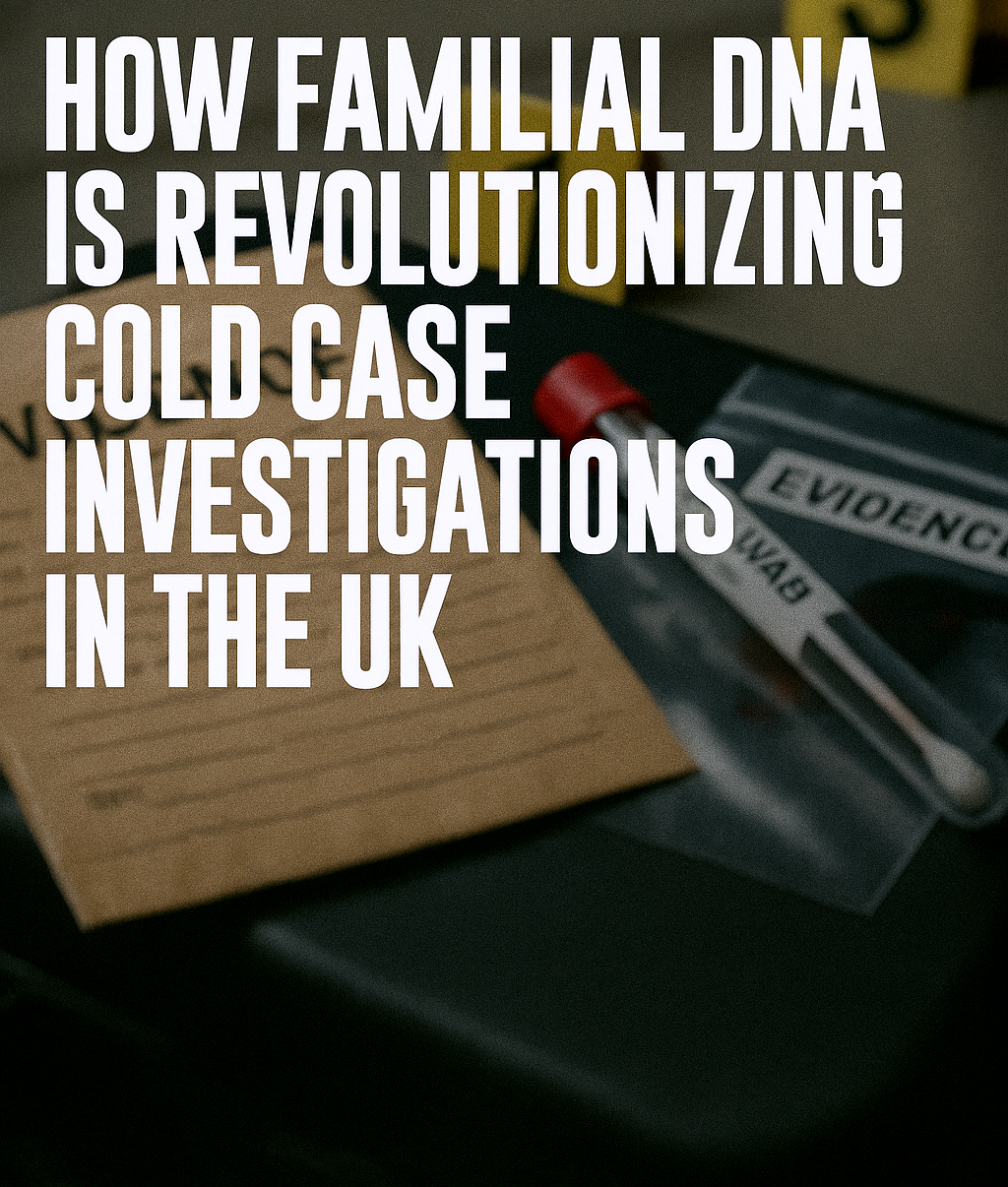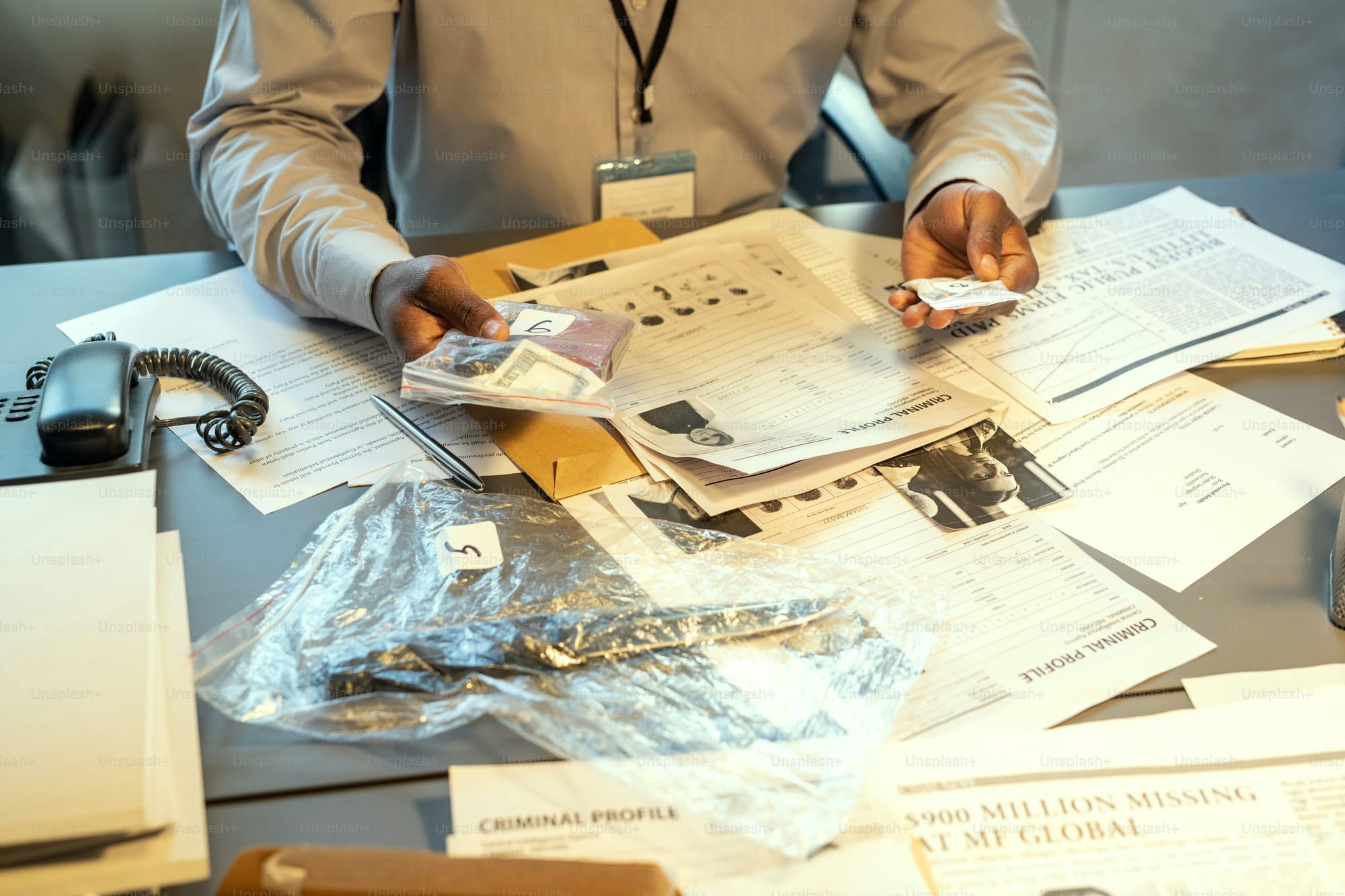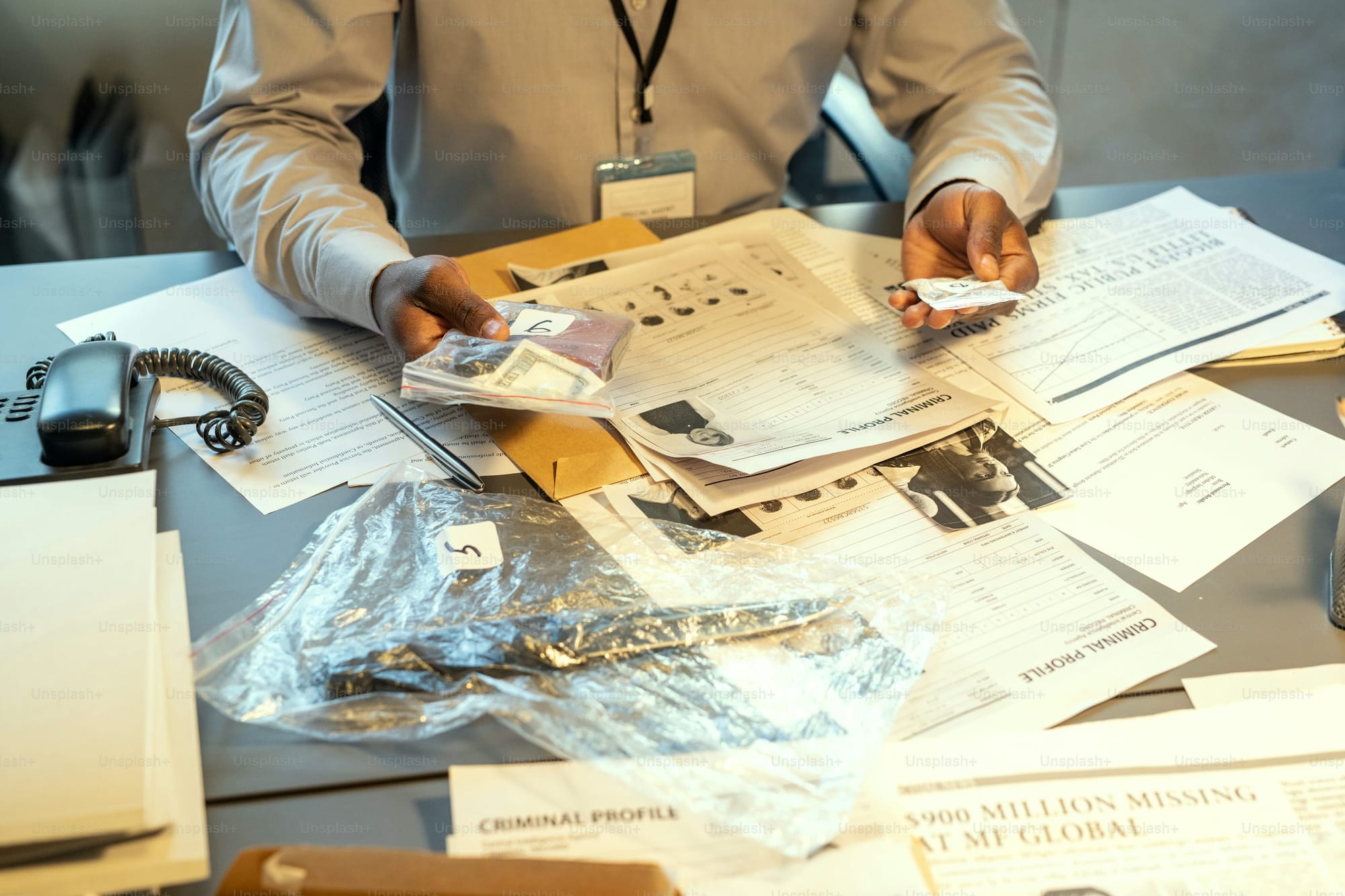Inside ‘Forensics: Murder Case’: What the Kirsty Wark Documentary Reveals About Modern Crime Solving
Explore how Channel 5’s Forensics: Murder Case and familial DNA are revolutionizing crime-solving. Featuring the George Murdoch cold case, this deep dive uncovers forensic breakthroughs, privacy debates, and the future of criminal justice.

–Written by Lavanya, Deep Dive Investigative Contributor – Allegedly The News
LONDON, July 22, 2025
When BBC journalist Kirsty Wark introduced the true-crime documentary Forensics: Murder Case, viewers anticipated another exciting mystery. They did not expect a compelling look at how modern forensic tools, particularly familial DNA matching, are uncovering the truth behind long-unsolved crimes. Central to this series is the 1983 murder of George Murdoch, known as “The Chewing Gum Killer,” which remained unresolved for decades, until now.
This blog goes beyond the story told by the show. It explores the science reshaping modern justice. We examine how forensic advancements are solving old cases, explain the complexities of partial genetic matches, and address the ethical concerns between crime-solving and individual rights.
The Future is Familial: A New Kind of Detective Work
One of the most significant ideas presented in Forensics: Murder Case is the increasing use of familial DNA matching. This method compares crime scene DNA not only to suspects but also to their relatives. It is like tracing a killer through their bloodline, even when the suspect has never submitted a DNA sample.
Kirsty Wark’s documentary describes this breakthrough with clear emotion. Through interviews with real investigators, crime lab analysts, and genetic experts, the series vividly illustrates how one piece of partial DNA from the past can trigger a modern-day manhunt.
What once required an eyewitness or a confession can now be solved with a hair follicle, a drop of sweat, or a relative with an AncestryDNA profile.
Cold but Not Forgotten: The George Murdoch Case
In 1983, George Murdoch, a 58-year-old taxi driver, was found brutally murdered near Pitfodels in Aberdeen, Scotland. He had been strangled with his own watch strap. Investigators collected a discarded piece of chewing gum as evidence, but DNA analysis was just beginning at that time. Leads went nowhere.
For nearly forty years, this case troubled the locals and the police. Then, in 2023, new forensic tools were used to re-examine that piece of chewing gum. Analysts extracted degraded DNA and matched it with expanded databases that included not just known offenders but also their distant relatives.
“We got a partial match to someone in Canada,” the documentary reveals. This international lead shocked investigators. Although the suspect was deceased, his brother’s DNA, willingly provided during the investigation, turned out to be a 94% match. The cold case was officially reopened.
From Crime Scene to Courtroom: How Familial DNA Actually Works
Here’s how the process works, step by step:
- Crime Scene DNA Collected – Often from degraded or limited samples, like hair, sweat, or saliva.
- DNA Profile Created – Using STR analysis, the sample is converted into a 20-loci genetic code.
- Database Comparison – It’s uploaded to national databases (like the UK’s National DNA Database or international databases via Interpol).
- No Direct Match? Try Familial Matching – Algorithms search for partial matches with shared genetic traits, indicating biological relatives.
- Narrowing the Circle – Researchers use genealogical trees, public ancestry databases, and social media to refine suspect lists.
- Police Investigation Begins – This may lead to surveillance, questioning, or direct DNA swabs.
- Arrest & Legal Proceedings – Once a definitive match is found, evidence is taken to court.
This streamlined process, now enhanced by powerful AI and bioinformatics platforms, can yield results even after four decades.

Timeline of Innovation: DNA & Cold Cases (1980s–2025)
| Year | Milestone |
|---|---|
| 1983 | George Murdoch murdered in Aberdeen. No DNA database available. |
| 1995 | UK creates the world’s first National DNA Database. |
| 2000 | STR and mitochondrial DNA testing becomes standard in major investigations. |
| 2010 | GEDmatch and AncestryDNA become publicly accessible; used for genealogy. |
| 2018 | Golden State Killer captured via familial DNA. Sets global precedent. |
| 2023 | Scottish police re-open the Murdoch case using familial DNA matches. |
| 2025 | UK Parliament debates routine familial matching in all violent crime cases. |

Cold Cases Cracked Worldwide by Familial DNA
The Murdoch case is part of a global trend. Among the notable cases:
- The Golden State Killer (California, 1974–1986): Caught in 2018 using familial DNA linked through GEDmatch.
- The Grim Sleeper (Los Angeles): DNA from a piece of pizza helped trace a serial killer.
- Christine Jessop’s Murder (Canada, 1984): Solved in 2020 through a second cousin’s DNA profile.
- Lynette White Case (Wales): One of the UK’s first successful familial DNA prosecutions in 2003.
Each case represents a victory for forensic science and raises questions about ethical limits.
The Ethics of DNA Surveillance: Justice or Overreach?
Critics are raising concerns. Here’s what’s at risk:
- Privacy Breaches: Individuals who upload DNA to genealogy sites rarely authorize police access.
- Racial Bias: Some DNA databases contain disproportionately high samples from minority communities.
- Misidentification Risks: Partial matches can lead to false leads or wrongful arrests.
- No Clear Consent: A family member's choice could unwittingly involve their relatives.
The UK’s Information Commissioner’s Office has warned against the blanket use of genetic data, and the EU is reevaluating its biometric policies due to these cases.
The question remains: How far should the government go for the sake of justice?
When Media Solves Crime: The Documentary’s Influence
Forensics: Murder Case is not just an informative series. It prompted viewers to provide tips that led to new leads. An anonymous viewer in Canada contacted authorities after recognizing patterns discussed in the documentary.
This isn't a new trend. Making a Murderer led to court reviews. Don’t F**k With Cats encouraged internet sleuths to identify a killer. Unsolved Mysteries helped solve at least 13 cold cases.
Kirsty Wark’s documentary may become a catalyst for solving Murdoch’s case and reshaping how modern forensics is taught, discussed, and trusted.
DNA, Without a Crime: How Innocents Are Dragged In
A haunting subplot of the series is the realization that you don’t need to commit a crime to become involved in a police investigation.
- A woman uploads her ancestry profile.
- A second cousin on her father’s side is connected to a decades-old murder.
- Police knock on her door, seeking voluntary DNA samples from her family.
This is not fiction. It is the true story of how one woman, linked to the crime only through genetics, helped police narrow down leads in the Murdoch case.
The psychological impact of this “genetic guilt by association” is just starting to be researched.
GEDmatch, AncestryDNA, and the Rise of the Genetic Dragnet
Initially intended to help users find lost relatives, commercial DNA platforms are now unintended partners in criminal investigations.
GEDmatch changed its policies after law enforcement used it to find the Golden State Killer.
AncestryDNA and 23andMe now face legal scrutiny over their privacy practices.
Users often do not realize that consenting to “research” can mean potential law enforcement use.
The legal gray area allows some courts to accept familial DNA matches while others dismiss such evidence. This inconsistent approach raises a dilemma: Should ethics evolve as quickly as technology does?
Science Meets Sleuthing: Procedure in Action
In Forensics: Murder Case, we see how forensic breakthroughs integrate with traditional detective work:
- Cold case detectives re-examine archived evidence.
- Lab technicians isolate low-quality DNA strands.
- AI tools sift through millions of ancestry profiles.
- Officers trace family trees, watch suspects, and build behavioral profiles.
This blended approach, part science, part instinct, is marking a new era in crime-solving. One where the investigator’s magnifying glass is now a genome scanner.

Recent UK Breakthroughs Using Familial DNA
- The Claremont Killer Case (2022): Linked to multiple murders in Birmingham through a nephew’s DNA.
- The North Sea Drowning (2024): An unidentified body from 2001 was matched to distant relatives using AncestryDNA.
- The “Cabbie Stalker” (2023): A serial attacker in Manchester was traced to his uncle’s military DNA records.
These incidents are no longer isolated events; they signal a systemic change.
Forensics: True Crime Meets Public Science Education
Kirsty Wark’s documentary serves as more than just a chilling revision of cold cases. It teaches how media can connect science with the public.
Through real case files, visual recreations, and expert commentary, the series clarifies genetic matching while bringing up difficult issues surrounding ethics, race, privacy, and legacy.
Wark’s calm, curious narration makes complex science understandable and its implications memorable.
What Happens Next? Is the UK Ready for Familial DNA Policing?
The UK Parliament is currently considering a bill to broaden the use of familial DNA in serious crime investigations. The Forensic Science Regulator has called for strict ethical oversight, particularly regarding minors’ DNA being used without explicit consent. Unlike the U.S., the UK has stricter surveillance laws and data protection frameworks under the GDPR and the UK Data Protection Act. That makes familial DNA use more controversial.
But the George Murdoch case and its emotional public resonance is creating pressure to modernize policies.
In April 2025, a proposal was introduced in the UK Parliament to establish clear guidelines on when and how police can use genetic genealogy. The draft includes:
- A requirement for judicial oversight
- Mandated anonymization of third-party users
- A ban on the commercial resale of DNA to private firms
While not yet law, the bill has already won cross-party support, and Wark’s documentary is credited with influencing the public debate.
Meanwhile, advocacy groups like Liberty UK and Privacy International are pushing for stronger restrictions on how law enforcement accesses commercial DNA databases.
If this legislation passes, it will solidify familial DNA’s role in the UK’s future criminal justice system.
Final Theory: Could the Cheese Wire Killer Be Within Reach?
With advancements in familial DNA and mounting pressure from documentaries, speculation is increasing. Online forums dedicated to true crime have come alive with new theories.
Some believe the suspect may have been incarcerated during previous DNA searches, which would explain the lack of a match. Others suggest a connection to several similar crimes in Northern England that went overlooked at the time.
Authorities remain tight-lipped, but sources close to the investigation confirm a “shortlist” of five genetically linked individuals has been put together. Investigators are now working to narrow this list by reviewing old mugshots, alibis, and travel records.
If they are correct, the cheese wire killer may not only be located; he may still be alive.
Your Genetic Shadow: What If Your Family Tree Solves a Murder?
Consider this: Each person shares about 50% of their DNA with parents, 25% with grandparents, and 12.5% with cousins. It doesn’t take much for someone to show up in another’s criminal investigation without committing a crime, this leads to a provocative question raised by the documentary.
Ethical Dilemma: Should Your DNA Be a Police Tool?
Would you feel comfortable knowing that your cousin’s ancestry test might help solve a decades-old murder? Would it change your perspective if it cleared an innocent person who had been wrongly suspected for years?
Or are we opening the door to surveillance that could be misused in the future?
These aren’t mere hypotheticals. As science develops and shows like Wark’s shift public views, our relationship with genetics and justice changes in real time.
Public Dilemma of the Digital Double Helix
If one of your relatives uploaded DNA to a genealogy site, would you be comfortable with that data being potentially used in a murder investigation? Why or why not? Would justice for one person justify the privacy risks for many?
Sources
- BBC News: George Murdoch Cold Case; BBC – Forensics: Murder Case
- Channel 5: Forensics: Murder Case Trailer
- DNA & crime law ethics – Dr. Alana Ferguson’s comments paraphrased from the broadcast
- Unsplash
- National DNA Database UK
- Cornell Law – Genetic Privacy Law
- Liberty UK
- GEDmatch Terms of Use
- The Guardian – Cold Cases and DNA




